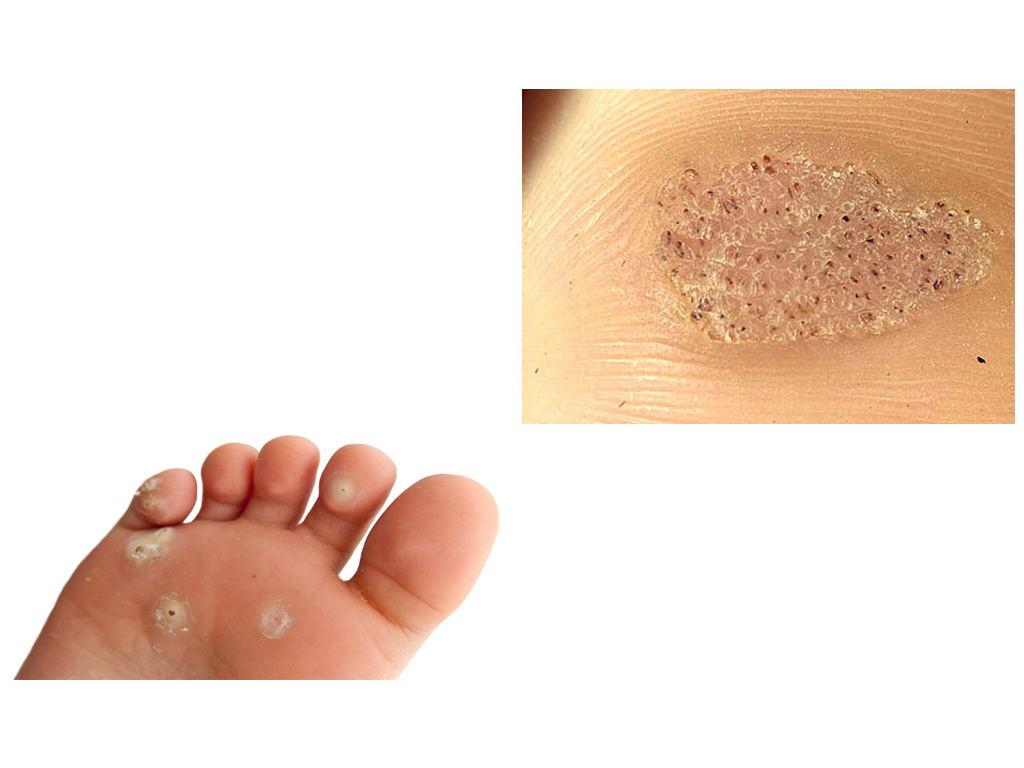Plantar warts are small, rough growths on the feet. They usually appear on the balls of the feet and the heels of the feet, areas of high stress. This pressure can cause the wart to grow inward under the hard, thick layer of skin (callus).
Plantar warts are caused by HPV. The virus enters through small cuts or cracks on the bottom of the feet.
Most plantar warts are not a serious health concern and usually go away without treatment, especially in children under 12. To get rid of them sooner, you can try self-care treatments or visit your healthcare provider.
Symptoms
Plantar wart signs and symptoms include:
- A small, rough growth on the bottom of your foot, usually at the base of the toes or on the ball or heel
- On brown and dark skin, the growth may be lighter than on unaffected skin
- Hard, thickened skin (callus) over a spot on the skin where a wart has grown inward
- Black pinpoints, which are tiny clotted blood vessels, are commonly known as wart seeds
- Clusters of growths on the soles of the feet (mosaic warts)
- A growth that disrupts the normal lines and ridges in the skin of your feet
- Pain or tenderness when walking or standing
When should you seek medical attention?
See your health care provider for the growth on your foot if:
- The growth bleeds, is painful, or changes in shape or color
- You've tried to treat a wart, but it persists, multiplies, or comes back (relapses) after clearing up for a while.
- Your pain interferes with your activities
- You also have diabetes or a poor feeling in your legs
- You have a weakened immune system due to immunosuppressant medications, HIV/AIDS, or other immune system disorders
- You are not sure if the growth is a wart
Leave a reply










